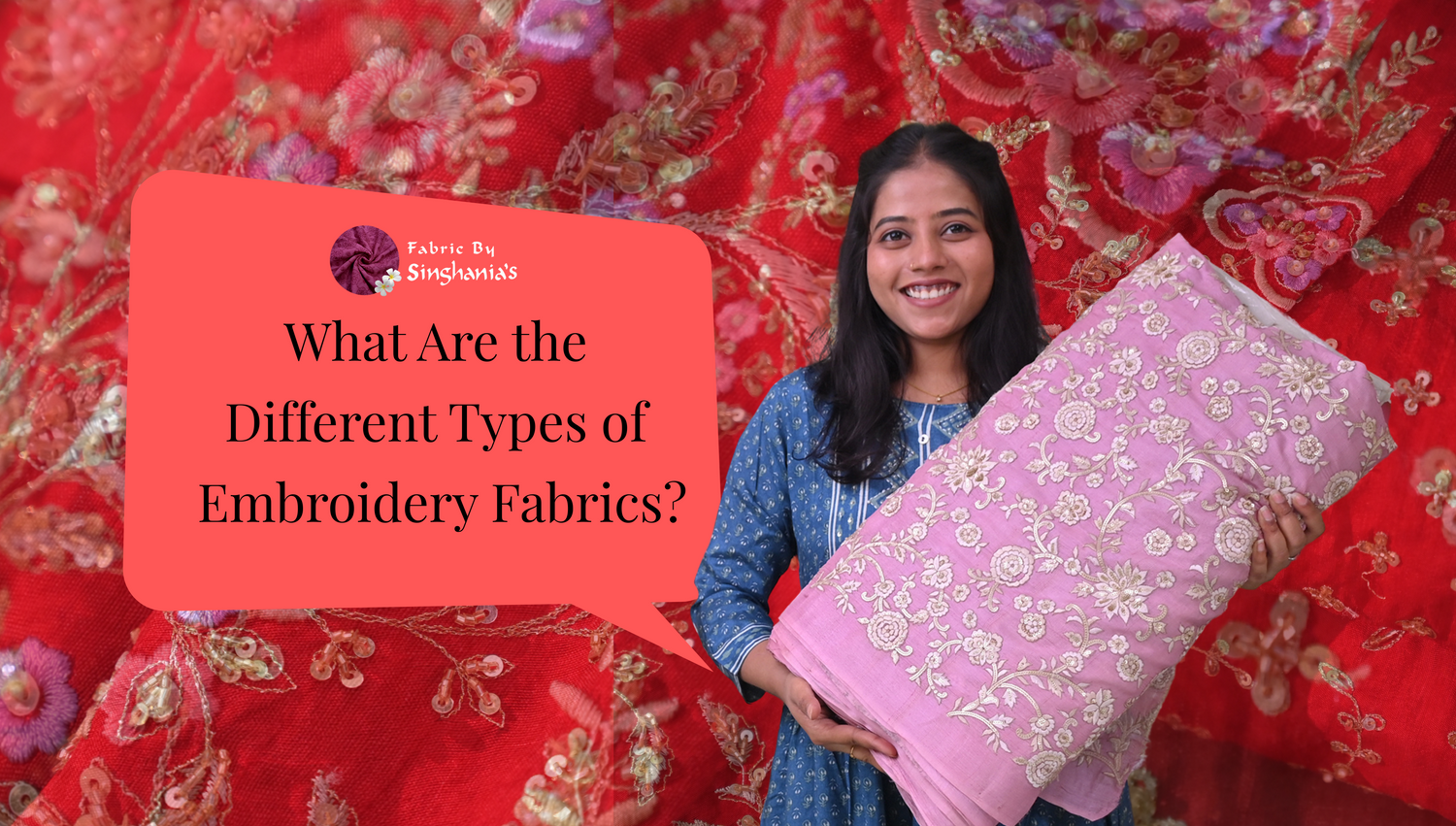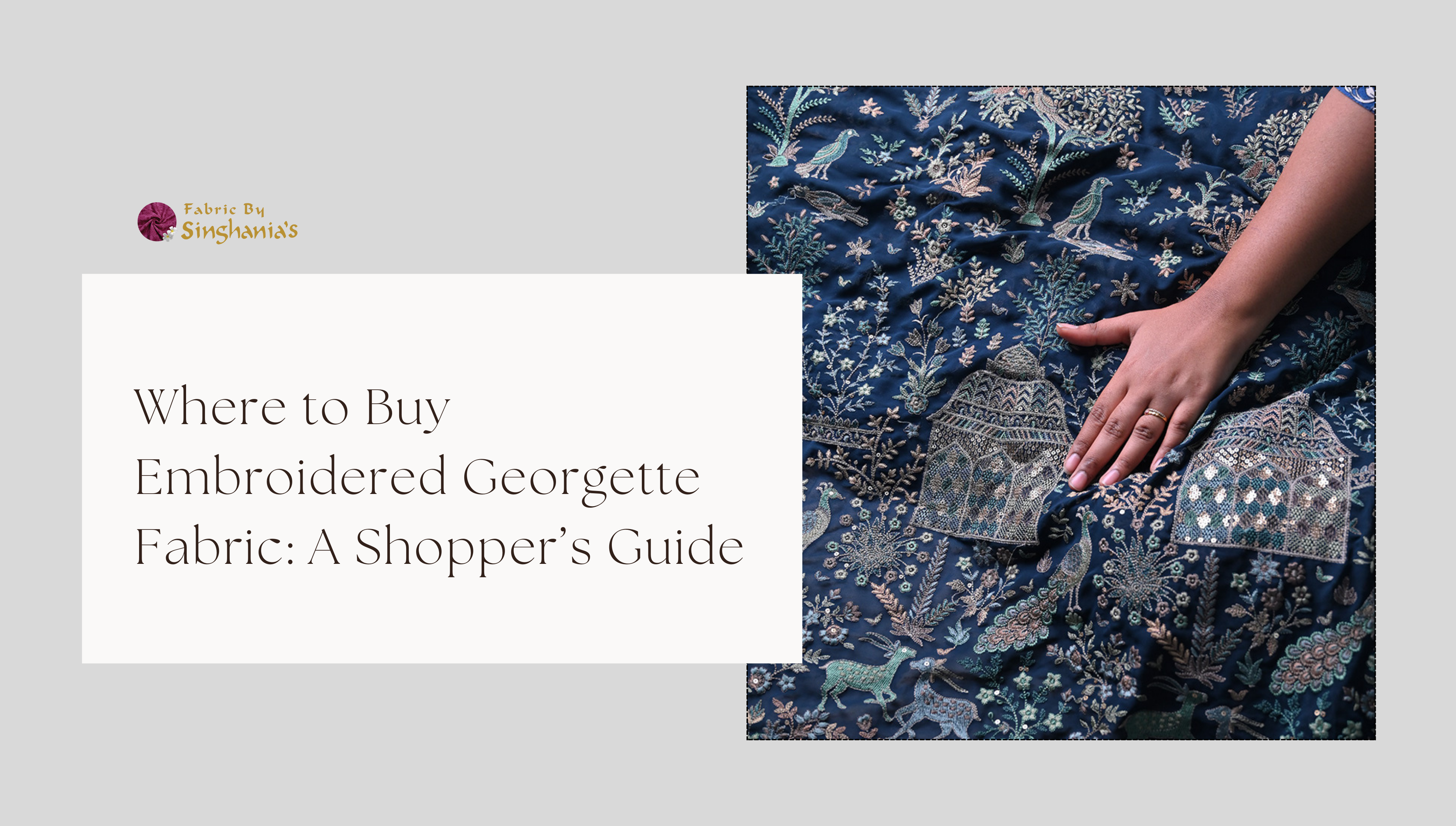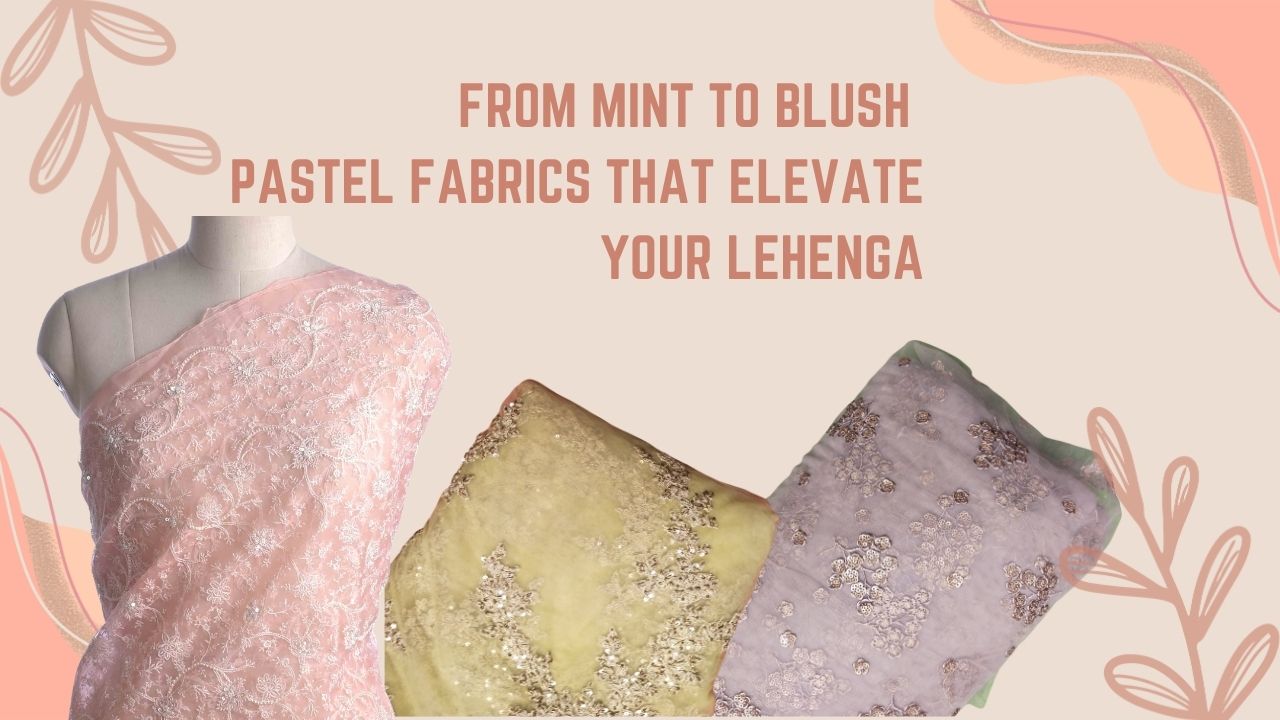For ages, people in India have loved decorating clothes with embroidery—it's been happening for about 5,000 years! This beautiful craft is deeply connected to our culture, religion and everyday life. Because of this rich history, embroidered fabric is a major export from India. Indian embroidery styles are incredibly varied, but they all share a love for detailed work, vibrant colors and designs inspired by nature. The fabric we choose for embroidery is super important because it affects how the final design looks and feels.
Long, long ago, even before written history, people in India were doing embroidery. We've even found samples of embroidery and bronze needles in the ancient city of Mohenjo-daro, which is about 4,000 years old! Later, a Greek ambassador named Megasthenes wrote about Indian clothes made of fine cotton with shiny gold embroidery. We don't have many actual embroidered pieces from the Middle Ages, but old paintings and sculptures show people wearing scarves, veils and tunics with embroidery. These ancient designs often had rich patterns and simple shapes like circles, stripes and checks. Knowing about different embroidery fabrics helps everyone, from beginners to experts, create beautiful things. This blog will explain the different kinds of embroidery fabrics, their history in Indian clothes, which fabrics work best for different embroidery styles and how to take care of your embroidered items, especially in the Indian weather.
Understanding Fabrics for Embroidery

Embroidery fabrics are like the base material we use to stitch beautiful designs with threads. We choose these fabrics carefully because of how they're woven, how they feel and how strong they are. The right embroidery fabric can make your design look amazing and last longer. It gives the stitches a good foundation and makes the threads stand out. But if you use the wrong fabric, your design might get messed up, the fabric might wrinkle, or even tear while you're embroidering or later on. So, understanding different embroidery fabrics is key to getting great results.
Natural Fabrics for Embroidery
India has a wonderful tradition of natural fabrics and many of which are ideal for embroidery, each carrying its own cultural and historical weight. Let's explore some prominent examples:
Tussar Fabric
Tussar fabric, also called "wild silk," is special in India. Unlike regular silk that comes from farmed silkworms, tussar fabric is made by silkworms that live in the forests. This makes it a bit rougher and gives it a natural golden shine. In the past, tussar fabric was often worn by kings and queens in India, especially in the eastern parts like Bihar and Jharkhand. It feels a bit warm and has a slightly bumpy surface, which makes it great for embroidery. It creates a lovely contrast with smooth silk threads or the plain look of cotton threads.
How to Style It: Clothes like sarees or kurtas made from embroidered tussar fabric look naturally elegant. For a fancy touch, you can have nature-inspired designs stitched on them using a technique called Kantha stitch. Adding gold or silver thread work (zari) on tussar fabric makes it look very traditional and rich, perfect for festivals. Because tussar fabric lets air pass through, it's comfortable for the Indian weather, so you can wear embroidered tussar fabric for both formal and casual events.
Georgette Fabric
Georgette fabric is a light and flowy fabric with a slightly crinkled surface. It's usually made from tightly twisted silk or synthetic threads like rayon or polyester. This fabric became popular in the early 1900s, first in Western fashion and then in India. Georgette fabric is delicate but also strong enough for embroidery. Because it flows so well, embroidered designs on it move beautifully with the garment.
How to Style It: Embroidered georgette fabric is often used for sarees, salwar suits and fancy dresses. A type of white embroidery called Chikankari looks especially beautiful on georgette fabric, making it look light and elegant, which is great for warm Indian weather. You can also add shiny sequins or beads for a more modern style. Because georgette fabric is light, you can have lots of embroidery on it without it feeling too heavy.
Tissue Fabric
Tissue fabric is very fine and almost see-through, with a subtle shiny look. This shine often comes from very thin metallic threads or a special way of weaving. In the past, tissue fabric was seen as luxurious and was loved by royal families because of its rich appearance. When you embroider on tissue fabric, you need to be very careful because it's delicate and can easily get damaged or wrinkled.
How to Style It: Sarees and blouses made from embroidered tissue fabric are perfect for weddings and big celebrations. Gold or silver thread embroidery makes its natural shine even more beautiful and dazzling. Traditional flower or paisley designs look lovely on it. Because tissue fabric is so delicate, it's usually saved for special occasions rather than worn every day, especially in the humid Indian weather where it needs extra care.
Organza Fabric
Organza fabric is a sheer, light and stiff fabric that was traditionally made from silk, but now it can also be made from synthetic materials. Because it's stiff, it provides a good base for certain types of embroidery, helping the designs keep their shape. While organza fabric wasn't as common in ancient Indian textiles as silk or cotton, it became more popular later, influenced by fashion around the world.
How to Style It: Embroidered organza fabric is often used to make light and airy sarees, dupattas (long scarves) and overlays. Delicate flower embroidery or simple geometric patterns look great on its see-through surface. The stiffness of organza fabric can add volume to sleeves or necklines. While it looks beautiful, it doesn't let much air through, so it might not be very comfortable for wearing for a long time in hot Indian summers. It's better suited for cooler evenings or indoor events.
Synthetic Fabrics for Embroidery
Besides natural fabrics, synthetic fabrics also have their benefits for embroidery. They are often strong and don't cost as much. Net fabric also offers benefits for embroidery. It can provide a unique, sheer base for designs. When you embroider on net fabric, it's important to use the right kind of needles and extra support underneath (stabilizers) to prevent the delicate structure from getting caught or stretched out of shape, as the open weave can be less stable than tightly woven materials.
Special and Decorative Fabrics

Apart from the usual natural and synthetic fabrics, there are also special and decorative fabrics that can make your embroidery projects unique. These might include velvet, which is soft and has rich colors, or linen, which has a natural texture and lets air through. Each of these fabrics has its own challenges and possibilities for embroidery. For example, when you embroider on velvet, you need to be careful not to flatten the soft surface, while linen's looser weave might need extra support for detailed designs.
Best Fabrics for Different Embroidery Styles
The fabric you choose should also depend on the type of embroidery you want to do. For delicate embroidery like shadow work or Chikankari, fine and sheer fabrics like georgette fabric or muslin work best. For embroidery where you count stitches, like cross-stitch, fabrics with an even weave, like Aida cloth or linen, are ideal because the consistent squares make it easy to count. Thicker fabrics like tussar fabric or a sturdy cotton called twill can handle heavier embroidery styles like crewelwork or machine embroidery with thicker threads. Knowing this helps you pick the right embroidery fabric that will work well with your chosen technique and make your embroidered piece look its best.
Choosing the Right Fabric for Your Embroidery Project

- The design: If your embroidery design is very detailed and has lots of stitches, you'll need a strong fabric that can handle it.
- What it will be used for: Will the embroidered piece be clothing, a decoration for your wall, or something else? This will help you decide how strong and how it should drape. For clothes, especially in India, choose fabrics that breathe well, like cotton or tussar fabric, for everyday wear.
- How experienced you are: If you're just starting, it might be easier to work with stable fabrics that have an even weave, like cotton or linen. If you've done embroidery before, you can try working with more delicate fabrics like georgette fabric or tissue fabric, which can be more challenging but also very rewarding.
- How you want it to look: The way the fabric feels, how shiny it is and its color will greatly affect the final look of your embroidered piece. Think about how the fabric will look with the embroidery threads you choose.
Taking Care of Embroidered Fabrics
To keep your embroidered fabrics beautiful and make them last, you need to take good care of them, especially in the varied Indian climate with its heat, humidity and dry seasons. Here are some tips:
- Wash by hand: If you can, gently wash embroidered items by hand using a mild soap. Avoid strong chemicals or scrubbing too hard.
- Dry naturally: Hang embroidered fabrics to dry in the shade so the colors don't fade and delicate threads don't get damaged. Don't dry them in direct sunlight.
- Iron carefully: Iron embroidered items on the wrong side with a soft cloth between the embroidery and the iron to protect the stitches. For delicate fabrics like georgette fabric or tissue fabric, use a low heat setting.
- Store properly: Keep embroidered clothes and other textiles in a cool, dry place, away from direct sunlight and dampness. You can wrap delicate items in acid-free paper.
-
Get professional help: For very heavily embroidered items or delicate fabrics like pure silk tissue fabric, it's best to get them professionally dry cleaned.
Final Words

The world of embroidery fabrics is as amazing and diverse as the art of embroidery itself. From the rich feel of tussar fabric to the soft flow of georgette fabric and the elegant shimmer of tissue fabric and organza fabric, each fabric offers a unique base for your creative ideas. Understanding the qualities and history of these fabrics, especially in the context of Indian fashion and weather, helps you make the best choices for your embroidery projects. To see a wonderful collection of embroidery fabrics, including many natural and special options, we invite you to visit Fabric by Singhania's, where you can find the perfect fabric to start your next beautiful creation.



